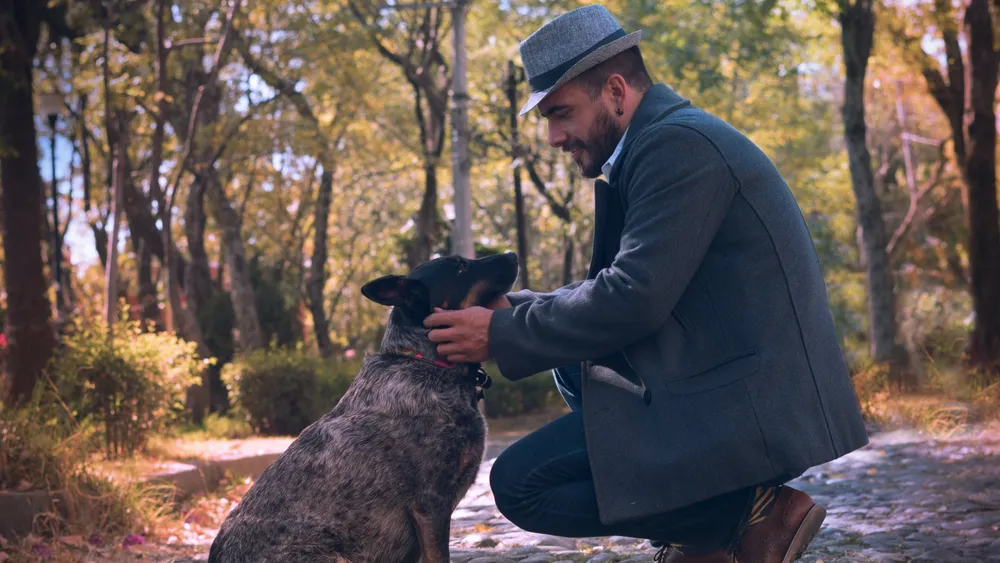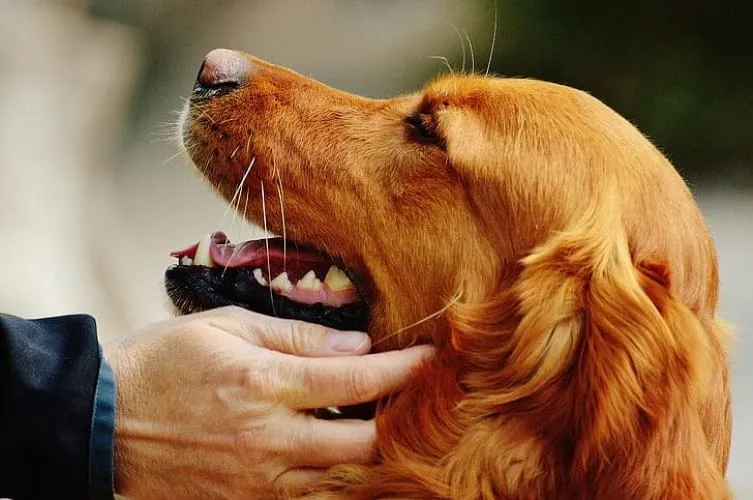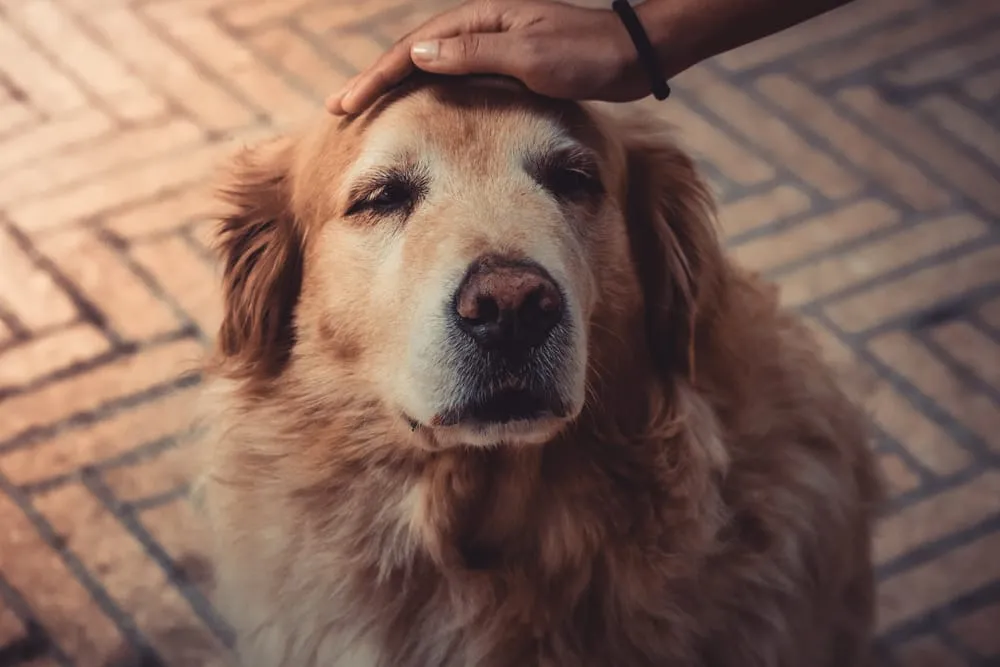As dogs age, they become more susceptible to a range of health issues, including strokes. While strokes in older dogs can be devastating, there are treatment options available that can help improve their quality of life. In this article, we will explore the different treatment options available for older dogs who have suffered a stroke.

A stroke occurs when the blood supply to the brain is disrupted, either by a blockage or a bleed. This can lead to a range of symptoms, including weakness or paralysis on one side of the body, difficulty standing or walking, loss of balance, and changes in behavior. While strokes are more commonly associated with humans, they can also occur in dogs, particularly as they age. Older dogs are more likely to have underlying health conditions that can increase their risk of stroke, such as high blood pressure, heart disease, or diabetes.
Understanding Strokes in Dogs
Strokes in dogs are a serious condition that can affect their brain function and overall health. Understanding the different types of strokes, common causes, and recognizing symptoms and signs can help pet owners seek prompt treatment for their furry companions.
Types of Strokes
There are two main types of strokes that can affect dogs: ischemic strokes and hemorrhagic strokes. Ischemic strokes occur when blood flow to the brain is blocked, while hemorrhagic strokes occur when there is bleeding in the brain.
Ischemic strokes are more common in dogs and can be caused by various factors such as blood clots, heart disease, and high blood pressure. Hemorrhagic strokes, on the other hand, can be caused by head trauma, tumors, or blood vessel abnormalities.
Common Causes
There are several common causes of strokes in dogs, including underlying health conditions such as heart disease, high blood pressure, and diabetes. Other factors that can increase the risk of strokes in dogs include age, breed, and gender.
Certain breeds, such as Cavalier King Charles Spaniels and Boxers, are more prone to developing strokes. Additionally, male dogs are more likely to experience strokes than females.
Recognizing Symptoms and Signs
It is important for pet owners to recognize the symptoms and signs of strokes in dogs to seek prompt treatment. Common symptoms of strokes in dogs include sudden weakness or paralysis, loss of balance, seizures, and difficulty walking or standing.
Other signs to look out for include changes in behavior, confusion, and loss of consciousness. If you notice any of these symptoms or signs in your dog, seek immediate veterinary care.
Strokes in dogs can be a serious and life-threatening condition. Understanding the different types of strokes, common causes, and recognizing symptoms and signs can help pet owners seek prompt treatment and improve their furry companions' chances of recovery.

Diagnosis of Canine Stroke
Diagnosing a stroke in an older dog can be challenging as the symptoms can be similar to those of other neurological conditions. A veterinarian with experience in neurology should be consulted to make an accurate diagnosis.
Physical Examination
During a physical examination, the veterinarian will assess the dog's overall health, including their blood pressure and heart rate. They will also evaluate the dog's neurological function by observing their gait, reflexes, and responses to stimuli.
Advanced Imaging Techniques
Advanced imaging techniques, such as CT or MRI scans, can provide a detailed view of the dog's brain and help identify the location and extent of the stroke. These imaging techniques can also help rule out other neurological conditions that may be causing the dog's symptoms.
Additional Diagnostic Tests
Blood work can help rule out underlying medical conditions that may be contributing to the dog's stroke, such as kidney disease or diabetes. X-rays may also be taken to evaluate the dog's chest and abdomen for any abnormalities that could be contributing to their symptoms.
In addition to these diagnostic tests, the veterinarian may also measure the dog's blood pressure and perform other neurologic tests to help confirm the diagnosis of a stroke.
Overall, a combination of physical examination, advanced imaging techniques, and additional diagnostic tests can help veterinarians diagnose a stroke in an older dog accurately. With a proper diagnosis, appropriate treatment can be prescribed to help improve the dog's quality of life.

Immediate Treatment Options
When an older dog suffers a stroke, immediate treatment is essential to minimize the damage and improve the chances of recovery. The following subsections outline the different immediate treatment options available for dogs that have suffered a stroke.
Stabilization
The first step in treating a dog that has suffered a stroke is to stabilize them. This involves ensuring that their airway is clear, their breathing is stable, and their blood pressure is within normal ranges. The veterinarian may also administer oxygen therapy to improve blood flow to the brain and other vital organs.
Medications
Medications may be prescribed to help manage the symptoms of a stroke in dogs. These may include anti-inflammatory drugs to reduce swelling in the brain, anticoagulants to prevent blood clots, and pain relievers to alleviate discomfort.
Supportive Care
Supportive care is an essential component of stroke treatment in older dogs. This may include providing intravenous fluids to maintain hydration, monitoring the dog's vital signs, and providing a quiet and comfortable environment to reduce stress.
It is important to seek veterinary care immediately if you suspect that your older dog has suffered a stroke. Early intervention can greatly improve the chances of a successful recovery. Your veterinarian can provide guidance on the best course of treatment for your dog based on their individual needs and medical history.
Managing Underlying Conditions
When an older dog experiences a stroke, it is often due to an underlying health condition. Therefore, managing these underlying conditions is crucial in preventing future strokes. Here are some of the most common underlying conditions and how to manage them:
Cardiovascular Health
Heart disease and blood vessel problems can increase the risk of stroke in dogs. To manage these conditions, it is important to keep the dog's blood pressure under control. This can be achieved through medication, a low-sodium diet, and regular exercise. It is also important to monitor the dog's heart health with regular check-ups and diagnostic tests.
Kidney Disease and Diabetes
Kidney disease and diabetes can also increase the risk of stroke in dogs. To manage these conditions, it is important to regulate the dog's blood sugar levels and maintain kidney function. This can be achieved through medication, a low-sugar diet, and regular exercise. It is also important to monitor the dog's kidney health with regular check-ups and diagnostic tests.
Infections and Inflammation
Infections and inflammation can also increase the risk of stroke in dogs. To manage these conditions, it is important to treat any infections promptly and manage any underlying inflammation. This can be achieved through medication and a healthy diet. It is also important to monitor the dog's overall health with regular check-ups and diagnostic tests.
By managing these underlying conditions, owners can help prevent future strokes in their older dogs. It is important to work closely with a veterinarian to develop a comprehensive treatment plan that addresses the dog's specific health needs.

Long-Term Rehabilitation
After a dog experiences a stroke, long-term rehabilitation is necessary to support their recovery and improve their quality of life. This section covers the three main areas of long-term rehabilitation: physical therapy and exercise, diet and lifestyle adjustments, and monitoring and follow-up care.
Physical Therapy and Exercise
Physical therapy is a crucial part of stroke recovery for dogs. It helps them regain movement, balance, and walking ability. A veterinarian will evaluate the dog's condition and create a physical therapy plan tailored to their needs. This may include exercises to improve muscle strength and flexibility, as well as techniques to improve balance and coordination.
Diet and Lifestyle Adjustments
Diet and lifestyle adjustments are also important for long-term rehabilitation. Dogs who have had a stroke may need a special diet to maintain a healthy weight and avoid other health issues. The veterinarian may recommend a specific diet or supplements to support the dog's recovery. Additionally, lifestyle adjustments may be necessary, such as providing a comfortable and safe environment for the dog to move around in.
Monitoring and Follow-Up Care
Monitoring and follow-up care are essential to ensure the dog's continued progress. The veterinarian will monitor the dog's recovery and adjust the rehabilitation plan as needed. They may also recommend regular check-ups and follow-up appointments to monitor the dog's overall health and well-being.
Overall, long-term rehabilitation is a crucial part of stroke treatment for older dogs. With the right physical therapy, diet and lifestyle adjustments, and monitoring, dogs can recover and improve their quality of life.

Prevention Strategies
Older dogs are more susceptible to stroke and it is important to take preventive measures to reduce the risk. Here are some key strategies that can help prevent stroke in older dogs.
Regular Health Check-Ups
Regular health check-ups are essential for older dogs. The vet can monitor the dog's blood pressure, which is a key risk factor for stroke. High blood pressure can damage the blood vessels in the brain, leading to stroke. The vet can also check for any underlying medical conditions that may increase the risk of stroke.
Diet and Weight Control
Diet and weight control are important for preventing stroke in older dogs. A healthy diet that is low in fat and cholesterol can help reduce the risk of stroke. Overweight dogs are more likely to have high blood pressure, which can increase the risk of stroke. It is important to monitor the dog's weight and adjust the diet accordingly.
Exercise and Activity
Exercise and activity are important for maintaining the overall health of older dogs. Regular exercise can help reduce the risk of stroke by improving blood flow and reducing the risk of high blood pressure. It is important to choose activities that are appropriate for the dog's age and physical condition. Walking, swimming, and gentle play are good options for older dogs.
By following these prevention strategies, owners can help reduce the risk of stroke in their older dogs. Regular check-ups with the vet, a healthy diet, and regular exercise can all contribute to a healthy and happy life for older dogs.
Prognosis and Quality of Life

Life Expectancy After a Stroke
The life expectancy of an older dog after a stroke can vary depending on the severity of the stroke and the overall health of the dog. In some cases, dogs can recover fully from a stroke and live a normal life span. However, in other cases, the stroke may cause permanent damage, which can lead to a shorter life expectancy.
It is important to note that strokes can also increase the risk of other health issues, such as seizures and heart disease, which can further impact the life expectancy of the dog. Therefore, it is crucial to work closely with a veterinarian to monitor the dog's health and provide appropriate treatment.
Supporting an Aging Dog
After a stroke, older dogs may require additional support to maintain their quality of life. This can include physical therapy, medication, and changes to their diet and living environment. It is important to provide a comfortable and safe environment for the dog, as well as regular check-ups with a veterinarian.
In addition to medical and physical support, older dogs also benefit from emotional support. Spending time with the dog, providing comfort, and engaging in gentle exercise can help improve their overall well-being.
When to Consider Euthanasia
In some cases, a stroke can cause significant damage to an older dog's brain, leading to a decline in their quality of life. If the dog is experiencing pain, discomfort, or a loss of mobility, it may be necessary to consider euthanasia.
However, this decision should be made in consultation with a veterinarian and after careful consideration of the dog's overall health and well-being. It is important to prioritize the dog's comfort and quality of life, and to make a decision that is in their best interest.
Conclusion
In conclusion, while strokes in older dogs are serious, timely treatment and proper care can significantly improve their quality of life. Early detection, immediate medical intervention, and long-term rehabilitation are key to managing strokes. Regular vet check-ups, a healthy lifestyle, and vigilance for stroke symptoms are crucial for prevention. The prognosis varies, but many dogs recover well with supportive care. Ultimately, decisions about an aging dog's health should prioritize their comfort and well-being, ensuring their later years are as fulfilling as possible.
FAQs
- What causes strokes in older dogs?
- Strokes in older dogs can be caused by a variety of factors including high blood pressure, heart disease, diabetes, and age-related deterioration. Underlying health conditions increase their risk.
- How can I tell if my older dog has had a stroke?
- Symptoms of a stroke in dogs include sudden weakness or paralysis, loss of balance, difficulty walking or standing, changes in behavior, and in severe cases, seizures or loss of consciousness.
- What is the immediate treatment for a dog that has had a stroke?
- Immediate treatment involves stabilizing the dog, possibly with oxygen therapy, administering medications like anti-inflammatories or anticoagulants, and providing supportive care to manage symptoms.
- Can a dog recover from a stroke?
- Many dogs can recover from a stroke with appropriate treatment and care. Recovery may include physical therapy, diet adjustments, and managing any underlying health conditions.
- What long-term care is needed after a dog has a stroke?
- Long-term care may involve physical rehabilitation, dietary management, regular veterinary check-ups, and adjustments to the dog's environment to ensure safety and comfort.
- How can I prevent my older dog from having a stroke?
- Preventive measures include regular veterinary check-ups to manage underlying health conditions, maintaining a healthy diet and weight, and ensuring regular, appropriate exercise.
- What are the signs that my dog is recovering from a stroke?
- Signs of recovery include improvement in mobility, balance, and overall behavior, reduced symptoms, and increased engagement with family and surroundings.
- Is it common for older dogs to have strokes?
- While not as common as in humans, strokes can occur in older dogs, especially those with underlying health conditions that increase their risk.
- What is the prognosis for an older dog after a stroke?
- The prognosis varies depending on the stroke's severity and the dog's overall health but many dogs lead fulfilling lives with proper management and care.
- When should I consider euthanasia for my dog after a stroke?
- Euthanasia may be considered if the dog's quality of life is significantly compromised, with persistent pain, discomfort, or severe mobility issues, after consulting with a veterinarian.




